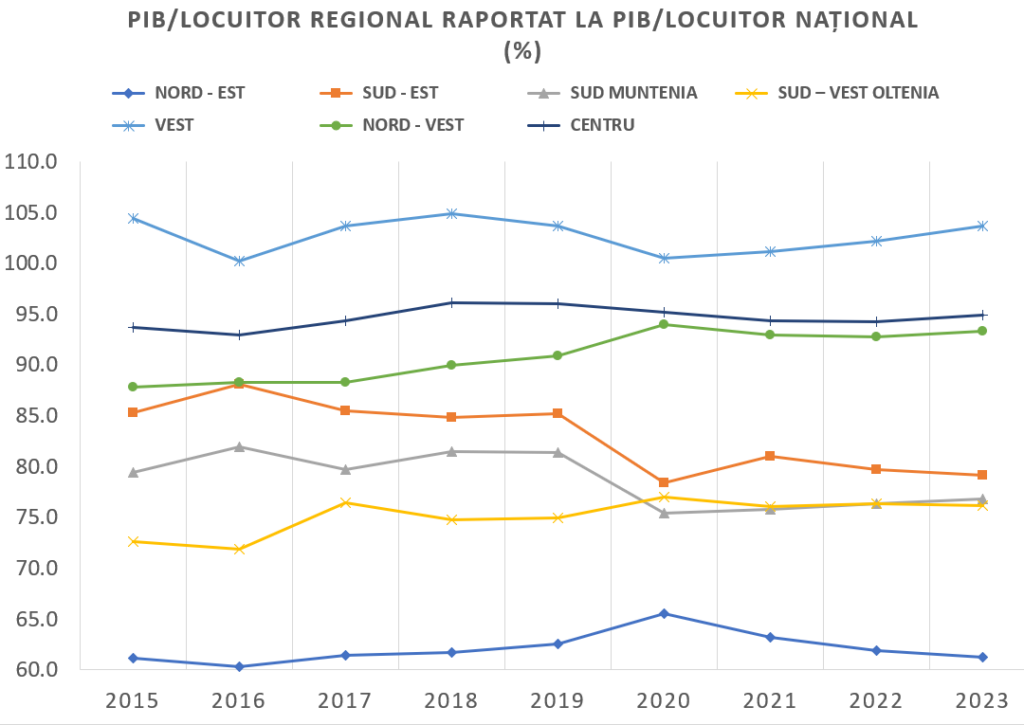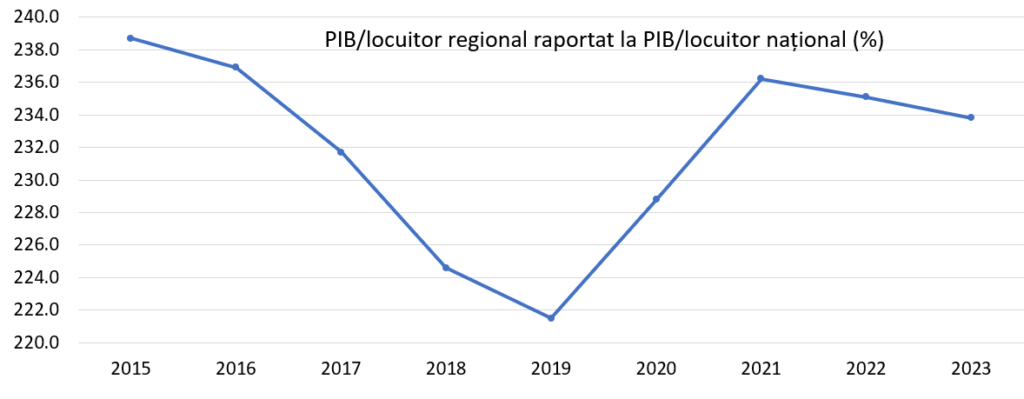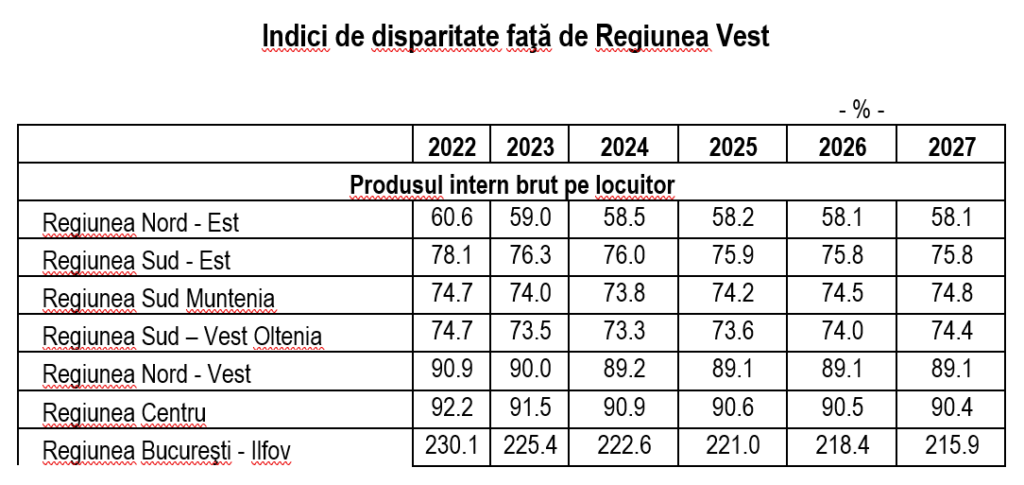Romania’s internal development divergence has resumed its post-pandemic growth, after having started to decrease in 2019.
Despite policies to fight the difference in development among Romania’s region, inasmuch as stated at least, the economic center of gravity is shifting yet again westwards.
The data considered are the GDP per inhabitant relative to the national average in the 2015-2022 interval, issued by the National Institute of Statistics, and the 2023 estimate according to the National Commission for Strategy and Prognosis.
Below, regional development evolution, the map of development regions and observations regarding these:
Observations:
2019 seems to have been the year that triggered the reduction in developmental differences among the 8 regions (including Bucharest-Ilfov) – a phenomenon that reached its peak in 2020 – the year of the pandemic.
It should be noted that the uniformization of development had started even before the pandemic – which appeared to herald a slight inclination of the economic development towards the East and South-East.
The West and North-West Regions, roughly situated close to the national average, subsequently registered the highest increases of the GDP/inhabitant compared to the national average, whereas the Central Region also recorded an increase, but to a lesser extent. Moreover, these are the most dynamic regions, after Bucharest-Ilfov, the latter remaining at over 230% compared to the national average.
The South-East Region registered the sharpest increase in the gap relative to the national average, dropping below 80% and nearing the South-West Oltenia and South Muntenia Regions, all three having a margin of plus/minus 5 percentage points.
The Bucharest-Ilfov Region is by far the most developed, but the decrease tendency had started even in 2015, reaching its lowest point in 2019; the Bucharest-Ilfov Region has seemingly neared its peak potential where indices are more volatile:
Evolution prognosis for the following 3 years, compared to the West Region
To better illustrate the evolution of economic advance by regions, the National Commission for Strategy and Prognosis also presented discrepancies compared to the West Region, including counties Timiș, Arad, Hunedoara and Caraș-Severin, otherwise the only region situated above the national average, alongside Bucharest-Ilfov (with only a marginal difference).
It should be noted that, aside from the South Muntenia Region that is expected to remain relatively stable compared to the West, all other regions are expected to register drops compared to the West:
from -2.5 percentage points in the North-East Region to -0.3 percentage points in South-West Oltenia. Actually, the sharpest fall compared to the West Region would be registered by Bucharest-Ilfov (-15 pp), but even so the gap would still be… 215.9%.
This data reveals that the West Region will return to its status of development core, with increasing differences estimated for the East and South of the country, and even the Center, the latter expected to advance at a lower rate.
***













